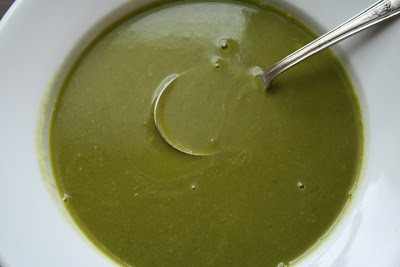I roasted a chicken last Tuesday and on Sunday I still had both wings, a leg, and a breast left. It was still perfectly good, of course, but had to be used soon and probably all at once. Sounded like pie to me. Sunday morning after breakfast my family was discussing what to have for our pic-nic the next day and pasties popped to mind. Pasties are wonderful for pic-nics--all the goodness of a pot pie made easily transportable and eaten. Not to mention completely adorable.
I've been using white whole wheat flour a lot lately in conjunction with unbleached all-purpose flour. I like it. It adds a certain something to your baked goods and doesn't feel at all wrong, as substituting whole wheat flour can. I used it in the best biscuits I've ever made, I used it in a cake, and I substituted a cup of it for one cup all-purpose flour in my go-to pie crust recipe for these pasties with excellent results. The pie crust recipe for one 8 to 9-inch two crust pie made 6 decent-sized pasties. You should end up with about 480 grams of dough from this recipe and then you can divide it into six 80g pieces, keeping all but the one you're working on in the fridge.
For the filling I used what I had of leftover chicken--the afore mentioned wings, leg, and breast--plus one thigh. I roasted three thighs, but only ended up using one of them. I didn't really need any of them, but the pasties were nice and chicken-y, so you can use as much or as little chicken as you have/want. Add the peas right at the last so they don't get too mushy. I made the filling the night before assembling the pasties, mostly because I didn't think I'd have enough time the day of, but it worked out well. The next morning I added the still frozen peas and a handful of minced parsley to the cold filling. Working with cold filling meant that the dough didn't start to melt as I was working with it, which makes everything easier, but also helps to ensure a flaky crust.
Chicken Pasties
makes enough filling for 6-8 pasties
- 1 recipe pie crust
- what you have of leftover chicken, cut into pieces
- 1 medium onion
- 2 cloves garlic, minced
- 1 carrot
- 2 small potatoes (Yukon Golds are nice)
- 1 turnip
- one small package peas
- any other veg that appeal
- a generous pinch each of dried thyme, oregano, sage, and crushed rosemary (or any other mix of herbs that you like)
- 1 handful parsley, minced
- 2 Tbs. butter
- 2 Tbs. flour
- 1 cup stock or water, hot
- 1 egg plus 1 Tbs. milk or cream, beaten to brush on top
- Cut leftover chicken into nice bite-sized pieces. Chop veg to a 1/4-inch dice. I like all the veg to be about the same size as the peas.
- Put a couple tablespoons of olive oil in aheavy bottomed pan over medium heat. Sauté the onion until soft and transparent, about 10 minutes. Add the rest of the vegetables, except for the peas, and sauté until the potatoes begin to soften. Add the chicken to the pan. Plop in the butter and once it has melted sprinkle the flour over the lot. Stir the pot until the flour is combined. Slowly pour in the hot stock, stirring as you pour. Stir the filling to make sure there are no lumps. Add your herb mix and allow to burgle a little while, adjust the seasoning, then pull it off the heat. Let the filling cool, then add the peas and parsley.
- The filling should be cold before you assemble pasties. To make a pasty measure out 80g pie dough and roll it out into a circle (roughly). Put a generous scoop of filling on one side. Wet the rim of the bottom half of dough with water. Pick up the top of the circle and, pulling it up and over the filling, match it up with the opposite edge of the circle. Crimp the dough together, making it as attractive as possible. Place the pasty on a parchment lined baking sheet and go on to the next one.
- Once all your pasties are on the baking sheet, beat together the egg and milk or cream to make a wash. Brush pasties with egg wash and then cut one or more slits to allow steam to escape with out rupturing your pasties.
- Bake in a 350°F oven until pasties are burgling and golden, 40-50 minutes. Cool pasties on racks before wrapping them up for your pic-nic.






















